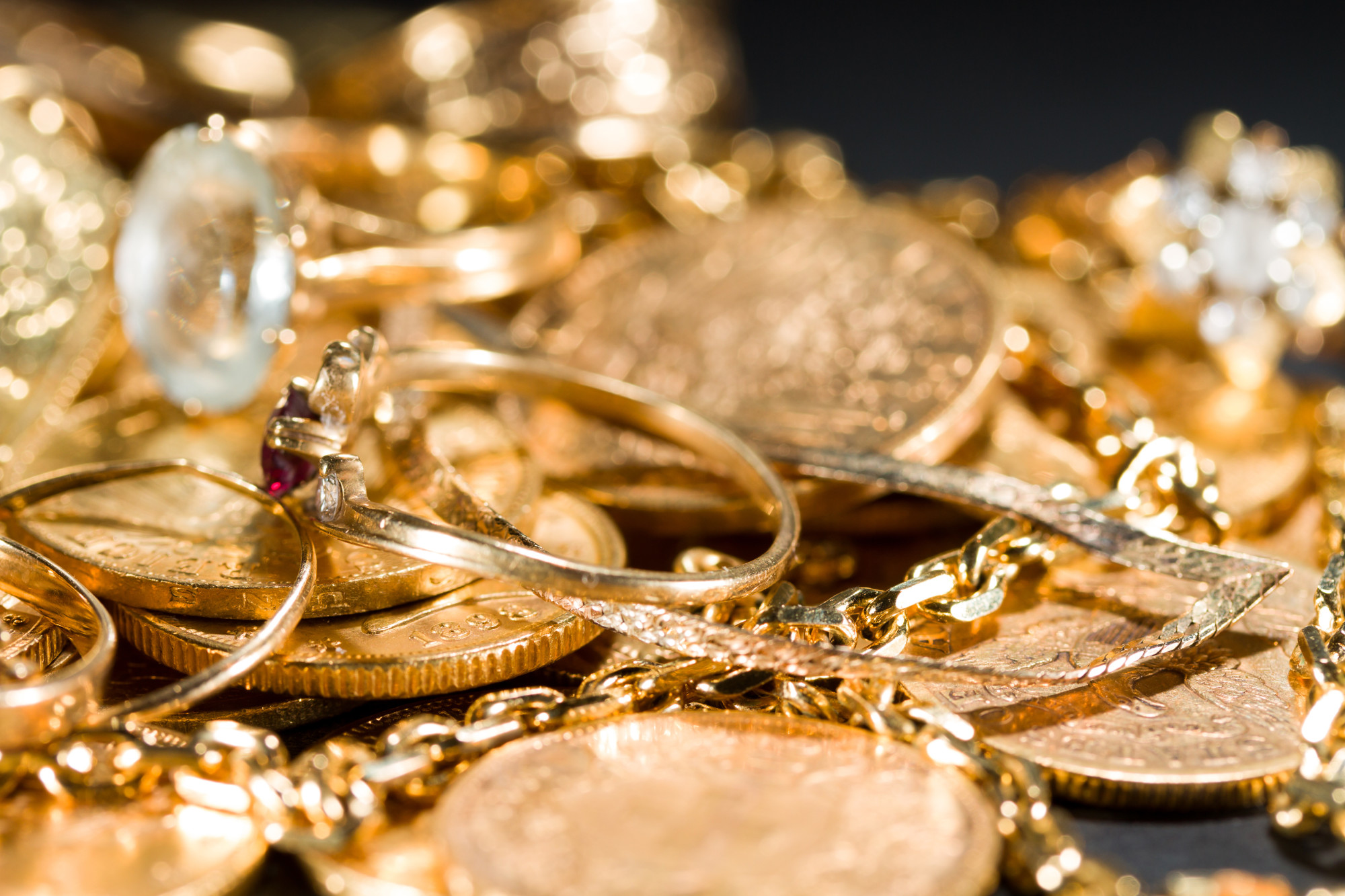Are you sure that necklace you’re trying to pawn off is authentic?
Sure it may look like real gold, but looks can often be deceiving — especially when you take modern gold-faking methods into account. Fortunately, there are plenty of ways to make sure you’re dealing with the real thing — the trick is to learn how to tell if gold is fake.
How to Tell if Gold Is Fake
A quick word of warning before you starting testing all of your gold jewelry, some of these tests could potentially damage the piece.
So, be sure to use caution, and if you’re testing a piece you like, try to stick to testing small or hidden areas so any potential damage won’t be as noticeable.
With all of that in mind, here are a few surefire tests you can run to see whether or not your gold jewelry is real.
Sink or Swim
This test is one of the least invasive and least potentially damaging ones on this list, which is why we put it first.
Gold is a heavy metal, which means that it will pretty much always sink in water even if the piece is hollow. While this test isn’t infallible, it’s a fantastic place to start, especially if you’re testing the authenticity of something potentially fragile, like a chain.
It’s Magnetic
Here’s a surprising fact; while gold is a metal, it’s not magnetic.
Another less invasive way to check the authenticity of your gold is by busting out a magnet and checking to see whether or not your jewelry sticks to it. That said, you’ll need more than a small refrigerator magnet to run this test. Fortunately, most home improvement stores carry strong magnets that will are much more effective when it comes to testing metals.
The Sniff Test
While real gold doesn’t omit much of a smell, fake gold usually does. But, don’t start sniffing your jewelry just yet.
It takes a little coaxing to get fake jewelry to release its aroma. Start by rubbing your hands together to get them warm, and maybe throw on some lotion if your skin is dry. You’ll need your hands to be hot and moist for this test to work. Once your hands are ready, take the piece you want to test and rub it between your hands for a while, then take a sniff.
If you don’t smell much of anything, congratulations, you have a real gold piece. But, if you smell something like coins, then you’re dealing with a fake.
Fair warning, this test could bend or break your piece or cause some of the color to rub off if your gold is fake, so be very careful.
Burning Gold
Finally, while this test could potentially destroy your jewelry, it’s the most surefire way to make sure you’re dealing with real precious metals.
Hang or place the piece you want to test on a fireproof surface, then grab your lighter. You’ll need to hold the flame to the gold for a while, at least 30 seconds, for an accurate test. If the jewelry starts to turn black, peel, or even catches fire, it’s not real gold. Actual gold will brighten as it gets hotter.
As we said before, this test can be incredibly damaging. So if you want to use it on a piece you like to wear, make sure you test in an area that you can easily hide.
While these tests can help you determine if the jewelry you already own is authentic, there are plenty of things you can do to make sure you avoid buying fake pieces in the future.
One of the easiest ways to avoid faux gold is by buying pieces, like this 4 qul necklace, from reputable dealers.
All That Glitters
Now that you know how to tell if gold is fake, it’s time to gt testing.
Are you looking for more advice on how to maintain or buy authentic jewelry? We’ve got you covered! Check out the rest of our blog for more helpful articles today.

